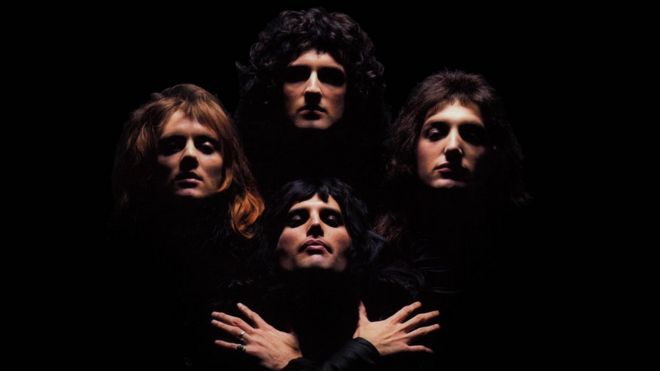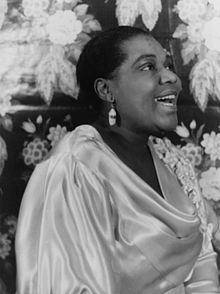Michael Jackson by Kallum Kafesci on Scribd
Friday 29 September 2017
Planning Our Music Video
Discussions
Myself, Kaan and Jack started to discuss what song we were going to use in the music video, the name of the artist and possible locations for where we would film. Firstly, we originally thought of using a Logic song, 1-800, which talks about mental illness but unfortunately this was a quite recent song and it had a music video so we could not use this song. We then changed style and decided to go with 'Heathens' by twenty one pilots and the tone and genre of this song helped us plan where to shoot the majority of our music video. The tone of the music video would be quite edgy and we would film in dark locations, such as tunnels, tube stations and alleyways. We also decided that I would perform in the music video. At the end of this lesson we started to make our mood boards. This featured the locations we would use, the name of the artist, which we decided to call 'Daze', and the type of clothing he would wear.Story of our Artist
Daze
Myself, Kaan and Jack sat down to discuss the origin and background of our artist who will feature in our music video, Daze. The background we decided to give our artist was that he is a young boy from South East London who had always had a passion for music since he was young. During his school life he was never popular and didn't really get on with people at all and isolated himself. He had always had an interest in singing but never really told anyone about it, even his parents. He would record his own singles and then put them onto CD's and go around places such as Camden and Central London handing his CD's out to independent music stores trying to promote himself. He originally called himself 'Dizzy' as referring to his state in life, not sure where he is going or what he wants to do and had no real control of his destiny. After some feedback from people in the music stores someone suggested the name 'Daze' and he has stuck with that. One of his singles did very well in music stores and got some attention online and now he is releasing the follow up single 'Heathens'. He is an signed to an independent music label called 'Dirty Hit', artists also signed to this include the 1975.
Thursday 28 September 2017
Postmodernism
Postmodernism is the movement in all forms of art where you take something from a previous era and reference it in their piece now. Examples of this in the music industry is when you reference a film or a music video in the current music video but making it a more updated and 21st century version. There are genre styles in the music world and they are;
- Experimental - establishing trends
- Cannon - woks within those trends to fix them and turn them into our cultural understanding
- Postmodern - make fun of these trends with the use of parodies etc.
These references made in the music videos are using intertextuality and this is done to possible appeal and attract a wider audience, therefore giving more awareness and publicity to their music. These references could appeal to a bigger audience because the reference to the older text will give possible nostalgia to the older audiences as well as attracting the younger and current audience.
An example of an artist using postmodernism in their song is the Backstreet Boys in their music video for "Everybody". They made several references to Michael Jackson's "Thriller" and this was done through the story of monster figures and how they turned from normal people into different creatures.
Monday 11 September 2017
Intertextuality
Homage: special honour or respect shown publicly.
The Rutles, originally seen in a TV Mockumentary, pastiche The Beatles. In some cases the pastiche was almost too close for comfort, as in the case of "Get Up and Go", which was almost banned from the soundtrack CD because of its resemblance to "Get Back". Fortunately Paul McCartney saw the joke, to the extent of performing the song himself.
Pastiche: an artistic work in a style that imitates that of another work, artist, or period.
 An excellent example of a music video that uses homage is The Kill by 30 Seconds to Mars. This video uses locations, themes and iconography from the popular classic horror film The Shining. The band perform in a hotel very similar to The Overlook hotel featured in The Shining and the lead singer sits at a typewriter just as Jack Nicholson’s character who is a writer does in the film.
An excellent example of a music video that uses homage is The Kill by 30 Seconds to Mars. This video uses locations, themes and iconography from the popular classic horror film The Shining. The band perform in a hotel very similar to The Overlook hotel featured in The Shining and the lead singer sits at a typewriter just as Jack Nicholson’s character who is a writer does in the film.
Parody: an imitation of the style of a particular writer, artist, or genre with deliberate exaggeration for comic effect.
A good example of a parody song is Eminem - Lose It. The artist uses make cultural references and makes a mockery of famous celebrities and events in his music video for Lose It.
The Rutles, originally seen in a TV Mockumentary, pastiche The Beatles. In some cases the pastiche was almost too close for comfort, as in the case of "Get Up and Go", which was almost banned from the soundtrack CD because of its resemblance to "Get Back". Fortunately Paul McCartney saw the joke, to the extent of performing the song himself.
Pastiche: an artistic work in a style that imitates that of another work, artist, or period.
 An excellent example of a music video that uses homage is The Kill by 30 Seconds to Mars. This video uses locations, themes and iconography from the popular classic horror film The Shining. The band perform in a hotel very similar to The Overlook hotel featured in The Shining and the lead singer sits at a typewriter just as Jack Nicholson’s character who is a writer does in the film.
An excellent example of a music video that uses homage is The Kill by 30 Seconds to Mars. This video uses locations, themes and iconography from the popular classic horror film The Shining. The band perform in a hotel very similar to The Overlook hotel featured in The Shining and the lead singer sits at a typewriter just as Jack Nicholson’s character who is a writer does in the film.Parody: an imitation of the style of a particular writer, artist, or genre with deliberate exaggeration for comic effect.
A good example of a parody song is Eminem - Lose It. The artist uses make cultural references and makes a mockery of famous celebrities and events in his music video for Lose It.
Goodwin's Theory (1992)
1. Music videos demonstrate genre characteristics (e.g. stage performance in rock video, dance routine in pop etc).
2. There is a relationship between lyrics and visuals.
3. There is a relationship between music and visuals.
4. The demands of the record label will include the need for lots of close ups of the artist and the artist may develop motifs which recur across their work (a visual style).
5. There is frequently references t notion of looking (screen within screens, telescopes, etc) and particularly voyeuristic treatment of the female body.
6. There is often intertextual references (to films, TV programmes other music videos, etc)
Development
- The advent of high quality colour video tape recorders and portable video cameras enabled many pop acts to produce promotional videos quickly and cheaply in comparison t the relatively high costs of using film.
- The key innovation in the development of the modern music video was video recording and editing processes along with the development of a number of related effect such as chroma-key and green screen/blue screen.
- Non-representational techniques, in which the musical artist is never shown, became more common
- Many images impossible to grasp on first viewing thus ensuring multiple viewing
- Split screens, colourisation are also commonly used effects
- Most common form of editing associated with the music promo is fast cut montage
Editing
- Through the most common form of editing associated with the music promo is fast cut montage, rendering many of the images impossible to grasp on first viewing thus ensuring multiple viewing, there are videos which use slow pace and gentler transitions to establish the mood.
- This is particularly apparent for the work of many female solo artists with a brand audience appeal, such as Dido.
- Often enhancing the editing are digital effects which play with the original images to offer different kinds of pleasure for the audience. This might take the form of split screens, colourisation and of course blockbuster film style CGI.
- Bitter Sweet Symphony - quick cuts, narrative is a man walking down the street, close up, mid shot, point of view, depth of field
History of Music Videos
- 1965: Bob Dylan Films Subterranean Homesick Blues as a segment for D.A. Pennebaker's film 'Don't Look Back'. This was widely credited as one of the first modern music videos. This is also used as an intertextual reference regularly.
- The invention of film and cinema brought about the possibility of combining music and moving images.
- Advances in technology have turned the music video industry into what it is today but you might be surprised at where it came from.
- Been around since the 1920s. Musicians such as jazz player Bessie Smith first featured in music videos.
Sunday 10 September 2017
Pop Music TV Shows
- 1970: The record industry discovers TV - this was shown as a great opportunity to promote their artists.
- They focus on producing short 'Promos', early music videos which started to replace the lure performance of the artist on the TV stage.
- 1975: Bohemian Rhapsody, a groundbreaking video released by Queen, marked the beginning of the video era and set the language for the modern music video. The video is considered one of the first to use advanced visual effects. Special effects played a vital role in propelling this video forward.

Subscribe to:
Posts (Atom)
-
Michael Jackson by Kallum Kafesci on Scribd
-
On this day myself, Kaan and Jack went to the drama room after school and re filmed some of the footage we required to after some feedback f...
-
Yesterday on the 22nd January, myself, Kaan and Jack went to Bexleyheath to buy some props and items of clothing that we intend to use in ou...





